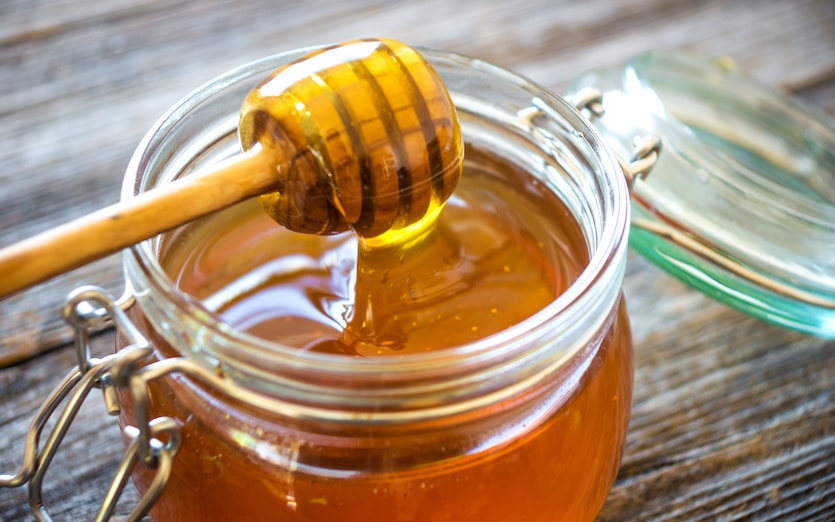There’s nothing quite like sinking into your own bed after a long, exhausting day. Unfortunately, this luxury isn’t an option when you’re traveling. But this doesn’t mean you have to give up on quality sleep on the road.
Getting high-quality shut-eye on a flight, during a road trip, or in a new time zone can be challenging. And everybody seems to have a different solution—supplements, prescription sleep meds, a game-changing neck pillow, specific sleep schedules, and the list goes on.
Before jumping to solutions, however, it’s important to understand the problem. Why, exactly, is it so hard to sleep while you travel? The following sections break down the science behind your body’s sleep patterns and offer a variety of travel sleep tips, giving you the tools for sleeping better on the road.
Circadian Rhythms are Key to Understanding Your Body’s Internal Clock
Daily, your body converts food into energy, excretes waste, responds to complex stimuli, fights to keep you healthy, and much more. And fortunately, most of these processes are carried out automatically. You don’t have to think about them, they just happen.
One of these processes is the sleep-wake cycle. Most people naturally get sleepy in the evening, sleep during the nighttime hours, and then wake up some time in the morning. So how does the body know when to start sleeping and when to wake up? The answer is surprisingly simple: circadian rhythms.
You may have heard it called the body’s internal clockwork. And that’s a good description. Circadian rhythms are 24-hour cycles that regulate a variety of bodily functions, from digestion to sleep. These cycles are controlled by the suprachiasmatic nucleus (SCN), which is located in the hypothalamus (a part of the brain tucked right above the brainstem). The SCN is affected by numerous stimuli, one of which is light. Naturally, this is an important factor in your sleep-wake cycle.
As the sun begins to go down in the evening, the SCN starts sending signals to prepare your body for sleep. In response, the body releases melatonin, a hormone that causes drowsiness. When the sun comes up, the SCN does the opposite, sending neurological signals to wake the body up.
At this point, you might be wondering what this has to do with travel. As it turns out, traveling often interrupts your body’s sleep-wake cycle. But more on that in the next section.
Travel and Sleep
There are several factors that may affect your sleep during travel. Identifying the ones that apply to you will help you choose an effective solution. The first factor to consider is comfort. An airplane seat is hardly a bed. And the seats in cars aren’t much better. If you’re flying or driving through the night, your internal clock will tell your body it is time to sleep, but the physical limitations of your space might make quality rest nearly impossible.
The second factor to consider is time zone. If you have jumped into a time zone that is more than a couple of hours different from your home, your body’s sleep-wake cycle will be off by several hours. It may be the middle of the day in your destination, but your body’s internal clock is telling you it’s time for bed.
Finally, there’s the element of familiarity. The human body has come a long way thanks to evolution, but there are still some instincts hardwired into your system from previous stages of human history. And, it turns out, one of these might be responsible for your difficulty sleeping in new or unfamiliar places. The body instinctively stays on high alert when you’re sleeping in a new place—it’s a survival instinct designed to keep you safe from threats. Unfortunately, high alert and quality sleep don’t exactly go hand-in-hand.
Each of these factors can influence the quality and duration of your sleep (or lack thereof). These interruptions to your sleep cycle can further throw off your internal clock. So whatever sleep challenges you face while traveling, your goal should be settling your body into a new sleep-wake cycle—and one that matches the time zone you’re in.
Melatonin 101: An Introduction to the Hormone and Sleep Supplement
As mentioned above, melatonin is a hormone naturally produced by your body to cause drowsiness. In dark environments, your brain signals the pineal gland, which releases melatonin to promote sleep. When your body is exposed to light, this production stops, helping you wake up.
Within the body, melatonin is produced by the pea-sized pineal gland in your brain, but it can also be created synthetically. This lab-made melatonin—known as exogenous melatonin—is often put into tablets, capsules, or gummies and sold as a sleep supplement. When consumed this way, it aims to support healthy sleep.
At this point, you hopefully understand the basics of why melatonin supplements work. But you may still have a lot of questions about how it relates to your travel sleep. Luckily, answers await from some common queries:
- When should I take melatonin? If you take a melatonin supplement, it’ll take between 30 minutes and an hour for the levels of melatonin in your blood to rise. In other words, it’ll take at least 30 minutes for the drowsiness to kick in. So plan accordingly. If you know you’ll be sleeping in a hotel or an unfamiliar bed, you can try to circumvent the restlessness and take melatonin roughly 30 minutes before you go to bed. Taking melatonin in the middle of the night can cause it to stay in your system too long, leading to daytime drowsiness the following morning.
- How much melatonin should I take? The correct dosage for melatonin will vary from person to person, but typically falls between 1 and 5 milligrams. Naturally, you’ll want to read the packaging on any melatonin product to see the recommended dose. When in doubt, start small and increase the dose until you find a level that works for you.
- How long do the effects of melatonin last? Everybody’s body is different, and so everybody processes melatonin at a different rate. You can assume melatonin stays in your system for about five hours.
- Is melatonin safe? Melatonin is naturally produced by the body and safe to use. Obviously, melatonin supplements will cause drowsiness—that is the point, after all—so you should be cautious and avoid driving after taking them. Melatonin can also interact with other medications—such as birth control, immunosuppressants, and antidepressants—so consult your doctor before taking melatonin supplements.
- Can you develop a dependency to melatonin? With short-term melatonin use, it’s highly unlikely you will develop a dependency. Similarly, you won’t develop a “tolerance” for it—that is, you won’t need to take more to feel the same effects.
- Are there any side effects to taking melatonin? In addition to drowsiness, you might experience headaches, nausea, or dizziness after taking melatonin. Less common side effects include brief feelings of depression, cramps, anxiety, and low blood pressure. If you experience these side effects, it’s best to consult your doctor before continuing to take a melatonin supplement.
How to Beat Jet Lag
If you’ve ever traveled between time zones, you’ve probably experienced jet lag to some degree. This phenomenon occurs when your body’s internal clock does not match up with your current time zone. Your circadian rhythm might be telling your body one thing, but environmental factors—such as sunlight—telling a completely different story. This can very easily throw off your sleep-wake cycle.
When people talk about beating jet lag, they typically mean adjusting to the new time zone as quickly as possible. This will help you feel energized throughout the day, sleep through the night, and have more time to enjoy your time abroad. Of course, it’s easier said than done.
The best way to overcome jet lag is to force yourself to follow the schedule of your new time zone—even if your body isn’t feeling it. So when 10 p.m. rolls around (or whatever your bedtime usually is in your home time zone), start your bedtime routine: brush your teeth, read a book, and, most importantly, hop in bed.
If you’re having trouble feeling sleepy, use environmental factors to your advantage. Be sure to turn out the lights, shut the blinds, and use an eye mask if necessary. Remember: your internal clock is easily affected by light cues. Additionally, you can take a melatonin supplement 30-60 minutes before bed. The presence of melatonin in your body will help your circadian rhythm adjust to its new schedule.
In the morning, it’s crucial to get up at a reasonable time. Sleeping until the afternoon will only make it harder for your body to adjust. When your alarm rings, open your blinds, and go out into the light. A morning walk in the sun will help tell your body it’s time to wake up.
Technology and Sleep: How Electronic Gadgets Can Help or Hinder Your Rest
In today’s world, technology can be used for almost anything—and aiding your healthy sleep on the road is no exception. When you sleep in an unfamiliar or uncomfortable place, there are a number of gadgets you can use to help you have a restful night.
On long flights, ear plugs and noise-canceling headphones are an absolute game changer. The recommended decibel level for white noise while you’re sleeping is between 40 and 50 decibels. Inside of airplanes, the noise level sits right around 80 decibels in flight—a volume that isn’t conducive to sleep.
Noise canceling headphones can reduce incoming sounds by up to 45 decibels, bringing airplane noise down to a comfortable level. Whether listening to soft classical music, white noise, or simply using the noise-canceling function without sound, these headphones can help you nod off in an otherwise uncomfortable environment.
If you’re sleeping in a new environment, your body is instinctively on edge. This means it is extra tuned in to the sounds in your environment—even while you’re asleep. In this state of heightened sensitivity, it may take less noise than usual to rouse you from your sleep.
To tune out sounds that could interrupt your shut-eye, consider trying a white or pink noise machine. Both machines create constant, ambient noise to block out other sounds in your environment and help you sleep through the night. (White noise has slightly different qualities than pink noise, hence the distinction, but the two machines work very similarly.)
Even though technology can help you achieve a sound sleep while you travel, there are things to watch for. Bright screens—from a TV, tablet, or phone—aren’t a good idea right before sleep, no matter what time zone or bed you occupy. Good sleep hygiene practices suggest you shut down your screens up to two hours before you plan to fall asleep.
Incorporate Travel Sleep Tips on Your Next Trip
Vacation is a time for relaxing, recreating, and recovering from the daily hustle and bustle. Sleeping well away from home is a big part of feeling refreshed and rejuvenated—not to mention energetic enough to have a proper adventure. Use the information about your internal clock and the travel tips—which work at home, as well—to tuck in for the best vacation sleep of your life.
References
https://www.healthline.com/health/how-long-does-melatonin-last#how-to-use
https://www.webmd.com/sleep-disorders/features/how-to-sleep-better-traveling
https://www.sleepfoundation.org/travel-and-sleep/how-to-get-over-jet-lag
https://www.sleepfoundation.org/circadian-rhythm
https://www.sleepfoundation.org/melatonin
https://www.soundsleephealth.com/why-is-it-hard-to-fall-asleep-away-from-home/









 Momentum can make you nearly unstoppable. One healthy decision can pave the way for more smart choices. But rolling through your wellness goals requires you to set the ball in motion.
Momentum can make you nearly unstoppable. One healthy decision can pave the way for more smart choices. But rolling through your wellness goals requires you to set the ball in motion.













